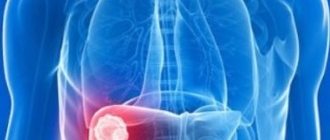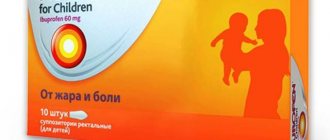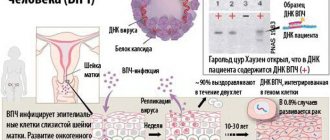|
Everyone has experienced or at least seen cold sores on the lip - small grouped pimples with liquid on the lip that itch and hurt.
People call herpes on the lips “cold sores” and “fever”. This is a viral disease, more specifically, it is caused by herpes simplex virus (HSV) type 1 (5 times less common than HSV type 2, which causes genital herpes). 90% of people are carriers of HSV, but the virus manifests itself only in every fifth person. The virus “dormants” in the body, “waiting” for its time. The disease is provoked by stress, G, influenza, frequent acute respiratory viral infections, exhaustion, lack of sleep, hypothermia, infectious mononucleosis, sunburn, and alcohol abuse. 20% of patients suffer due to relapse of the disease. People with weakened immune systems are 4 times more likely to experience clinical manifestations and relapses of herpes.
HSV type 1 also causes herpes encephalitis.
HSV is transmitted by contact with damaged skin and mucous membranes, for example, through kissing. Infection through airborne droplets is also possible: through sneezing and coughing. Infection occurs much less often if you use the same dishes, towels or linen, because the virus quickly dies on dry, hot surfaces.
The duration of contact with an infected patient is important, which is why in 70% of cases relatives infect each other. The period of rashes (vesicles) and ulcers is dangerous. At the stage of healing - the appearance of crusts, a person is not contagious.
Living with Herpes
Oh, horror, I feel a tingling sensation on my lips! Is this a sign of herpes? Many people almost panic when painful herpetic blisters appear on their lips. Mostly, discomfort is associated with a psychological factor, since in this situation people feel helpless. This was shown by surveys conducted among people with herpes on the lips. Although the psychological aspect should not be overemphasized, it does play a role in herpetic lesions. This pressure arising from the disease clearly shows how important it is to have a quick and effective remedy for the treatment of herpes on the lips. Patients with herpes feel that they are helpless and alone, and experience guilt and shame. Herpes on the lips reappears when you have the flu or are under stress. Often this is felt by a person as a personal weakness, exposed to everyone around him. Here are typical statements from patients: “I hate these blisters, and I understand that I can’t do anything about them,” “If I took better care of myself, the disease would not exist. It’s my fault,” “I feel so unkempt!”
What does herpes and a temperature of 37 degrees mean?
The manifestations of viral infections are familiar to most people. Herpes and a temperature of 37 indicate the stage of activation of the infection. The virus usually appears as a rash on the lips or around the nose, although it can appear on other parts of the body if precautions are not taken.
The insidiousness of the disease is that it can spread, sometimes rashes cover the upper and lower lips, after which the pimples burst and become covered with a brown crust. The peculiarity of the disease is that once infected with a virus, it is impossible to defeat it and be cured forever.
Herpes usually appears as rashes on the lips or around the nose, although it can spread to other parts of the body.
There are currently no drugs that can cure the virus. Due to the ease of transmission of the disease, almost 90% of the world's population suffers from herpes.
Therefore, even celebrities - artists and politicians - have visible unpleasant consequences in the form of rashes on their lips. There are 8 types of herpes virus. The virus that appears on the lips is type 1.
Type 2 is localized in the genital area. These two types of virus are the most common.
How dangerous is the herpes virus?
Due to the prevalence of the disease, many people are interested in what danger this disease poses to life. It is important to know that different types of virus cause different diseases.
Some of them may indeed have the worst prognosis. But herpes viruses types 1 and 2 are not fatal. Their manifestation is limited to unpleasant rashes on the face.
However, with proper treatment and precautions, all consequences can be minimized.
Stages of development of herpes.
The third type of viral infection, herpes zoster, causes shingles in adults and chickenpox in children. Infection occurs by touching a sick person. Some doctors are inclined to believe that shingles is a relapse of chickenpox.
Type 4 is the Epstein-Barr virus. It may not manifest itself in any way for a long time, but can cause serious and fatal diseases, such as:
- mononucleosis;
- malignant tumors;
- hepatitis;
- herpetic sore throat.
Cytomegalovirus can cause infertility in men and women.
Cytomegalovirus belongs to type 5. It does not pose a danger to a healthy person with good immunity. Even when the body’s protective properties are weakened, it does not cause skin rashes. But at the same time it has a negative effect on internal organs. This phenomenon is dangerous for babies. May cause infertility in men and women.
The sixth type can cause pneumonia, myocarditis, meningoencephalitis, epilepsy, and lymphadenopathy.
The seventh type includes the herpes virus, which causes the development of chronic fatigue syndrome. It is not considered life-threatening, but causes constant muscle pain, weakness, fatigue, and decreased intelligence.
The eighth type of virus is considered quite dangerous, as it causes Kaposi's sarcoma. This type of virus is detected only after the development of this disease.
The fourth type of herpes, the Epstein-Barr virus, can cause herpetic sore throat.
What are the symptoms of infection?
Symptoms of the disease depend on the type of virus. Each type causes different diseases, characterized by different manifestations. Types 1 and 2 viruses are characterized by the following manifestations:
- itching at the site of the future rash;
- pain;
- burning sensation;
- increased body temperature;
- deterioration of health;
- dizziness;
- muscle or joint pain.
Usually a rash appears on the lip after a cold. People mistakenly think that this is how acute respiratory infections manifest themselves. In fact, the body is weakened due to acute respiratory infections and cannot keep the virus under control. Therefore, after colds, herpes sores most often appear around the mouth.
With genital herpes, body temperature can rise to 38 degrees. The patient is bothered by pain and itching in the genital area, headache. There is an increase in lymph nodes in the groin. Frequent urination is also added to these manifestations. After the rash, after 7 days, the pimples dry out and the crusts disappear.
During oral sex with a patient with genital herpes, you can become infected with a virus that appears on the oral mucosa. The symptoms will be the same as with the first type. And treatment requires the use of the same medications.
With genital herpes, enlarged lymph nodes in the groin are observed.
With shingles, the pain and itching become so severe that the patient loses sleep. Therefore, with this manifestation, therapy with painkillers and antipyretic drugs is required.
How is this disease transmitted?
The prevalence of viral infection is due to the fact that patients do not always know about their infection. People in good health can be carriers of the virus without having any symptoms of herpes themselves. Having no clinical manifestations, a person considers himself healthy and has sexual intercourse, infecting his partners.
Herpes is transmitted through intimate relations and even kissing.
After all, the virus is most often transmitted through:
- sexual intercourse;
- kisses;
- household items;
- personal hygiene items;
- by airborne droplets.
Condoms do not provide absolute protection, although they are designed to protect people from the transmission of various diseases. Some countries are working on legislation to require condom packaging to carry a warning about this.
Condoms are designed to protect people from the transmission of various diseases, but they do not provide absolute protection.
Source: https://oherpese.ru/oslozhneniya-i-posledstviya/temperatura
What is herpes
Herpes on the lips (in Latin - herpes labialis) is an infectious disease caused by the herpes simplex virus type 1. This virus contains DNA and replicates in the nucleus of the host cell. A common manifestation of the disease are painful blisters filled with fluid located along the contour of the lips. The blisters burst, an ulcer forms, which then becomes covered with a crust. Without treatment, herpes on the lips goes through all these stages within 8-12 days. However, even after recovery, the virus continues to persist in the nerve ganglia (clusters of nerve cells), and therefore the disease can return at any time.
Preventive measures
To prevent the development of the latent stage of the disease, you should take care of strengthening the immune system, observe personal hygiene rules, take vitamins, and get rid of the bad habit of touching your face and eyes with your hands. Hypothermia and overheating must be avoided.
Herpes on the lips is an unpleasant phenomenon, which is not only a cosmetic defect, but also a factor that worsens overall well-being and quality of life. The main principle that will help prevent the activation of the virus is the constant strengthening of the immune system.
How contagious is herpes?
One of the most common ways of transmitting the herpes virus to others is through direct skin contact. Thus, the virus can be transmitted by kissing, as well as by successively touching the infected area with a finger, and then touching another part of your body or the skin of another person. For example, a person with herpes on the lips can infect their eyes by first touching the infected area and then their eyes, which can happen especially often in those who wear contact lenses. The increased risk of infection is not only because people who wear contact lenses touch their eyes more often, but also because the lenses reduce the amount of oxygen that reaches the cornea. Decreased oxygen supply to the cornea in itself is not a problem, but it does lead to an increased risk of infection. Additionally, the herpes simplex virus can continue to live for several hours in liquids as well as on surfaces. Therefore, if you share a glass, mug or bottle with someone, this is enough for the virus to be transmitted!
Preventing Herpes Transmission
Herpes spreads easily from person to person. It can spread even if someone has no active disease.
To avoid spreading the virus, you can do the following:
- Avoid touching, scratching or cracking if you have a cold sore. Touching them transmits the virus, allowing it to spread to fingers, eyes and other people.
- Wash your hands frequently. This can help prevent the virus from getting on your hands and thus spreading.
- Avoid sharing drinks, utensils, food, towels or anything that may touch your mouth, especially if you have sores.
- Avoid skin-to-skin contact with others if you have herpes. This includes kissing, sexual contact and contact sports.
© ivanovgood/Pixabay
Herpes, where it all begins
Infection with herpes simplex virus type 1 usually occurs during childhood. Typically, the source of the virus is infected parents or other adults. The initial episode of infection often goes unnoticed. After initial infection, the immune system successfully eliminates the virus on the skin and mucous membranes, but not in the nerve ganglia. A latent (hidden) infection develops, in which the viruses themselves are not detected, but the viral DNA remains in an inactive state in the nuclei of nerve cells and can be activated under favorable conditions. When the virus “wakes up”, the replication (multiplication) mechanism is launched, new viral particles are created, which move along the processes of neurons to the skin and again infect skin cells.
Temperature for herpes: causes, indicators, treatment
Herpes is a virus that, according to the World Health Organization, affects 80 to 90% of the world's inhabitants.
Doctors distinguish five main types of infection (herpes simplex virus types I, II, varicella-zoster, Epstein-Barr viruses, cytomegalovirus). Three more varieties remain insufficiently studied.
Depending on the type of pathogen, a sick person develops rashes on the skin and mucous membranes, and symptoms of chickenpox, shingles, and mononucleosis occur. The temperature often rises with herpes.
High readings on the thermometer are most often observed when the body first comes into contact with an unfamiliar virus. Repeated outbreaks of the infectious process are accompanied by moderate or normal temperature values.
More information about whether herpes causes fever and how high it can be in different forms of the disease will be discussed in this article.
Other signs of infection
Most people become infected with the herpes virus during childhood. Once it enters the body, the infection remains there for life.
The most common forms of the disease are oral and genital. In the first case, activation of the pathogen leads to the person complaining of unpleasant symptoms:
- itching, tingling near the lips or on their surface, inside the oral cavity;
- the appearance of painful blisters in the affected area;
- in some cases - the transformation of blisters into long-term non-healing ulcers.
In those infected with genital herpes, the disease often occurs without symptoms or they are mild. One or more itchy and painful blisters (ulcers) appear on the genitals.
In severe forms of herpetic infection, rashes and fever are accompanied by a general deterioration of the condition. This is caused by intoxication of the body. A sick person complains of the following manifestations of the disease:
- fast fatiguability;
- aches, muscle spasms;
- enlargement and pain in the lymph nodes;
- Pain in the eyes;
- attacks of nausea, vomiting;
- diarrhea.
In those who have had chickenpox (the causative agent is varicella-zoster), many years later the infection manifests itself in the form of shingles. Pathology can be recognized by characteristic signs:
- unbearable pain along the major nerves;
- the appearance of itchy, painful rashes;
- enlarged lymph nodes.
The rash with shingles does not always appear immediately with pain. The time interval between symptoms can be up to six months. This makes diagnosis very difficult.
Mononucleosis develops in people infected with herpesvirus type 4. The disease manifests itself:
- increased temperature;
- pain in the head;
- decreased performance;
- loss of appetite;
- irritability;
- rashes on the lips.
Mononucleosis may be accompanied by a sore throat. Patients are also diagnosed with deterioration of the liver and spleen. Read more about how mononucleosis develops and what temperature is accompanied by it in the following article from temperaturka.com.
Temperature indicators for herpes
What temperature can be caused by herpes depends on the form of the infectious process and on the state of the immune system of the sick person. It happens that the appearance of characteristic bubbles does not occur at all without an increase in readings on the thermometer.
At the first symptoms of herpes, a temperature of 37 degrees is a common occurrence. Low-grade fever (i.e. temperature values from 37 to 37.9) is the first manifestation of virus activity in the human body.
A slight fever in adults and children is accompanied by a feeling of twisting of muscles throughout the body, headaches, and weakness.
Doctors do not recommend lowering a low temperature - it contributes to the death of the virus.
If the sick person takes an antiviral drug prescribed by a doctor and uses an external remedy to lubricate the rash, then the temperature begins to return to normal 2-3 days after its appearance. In cases where low-grade fever remains on the thermometer for up to five days after the onset of the illness, a more severe infection can be suspected.
An increase in temperature with herpes to 38 degrees or higher indicates the appearance of complications. They arise if, when the virus is activated, a person is already weakened, and his immune system is not able to adequately fight back. In this case, the disease occurs immediately and is often complicated by respiratory infections, damage to the mucous membranes and internal organs.
A febrile state with a temperature of 39 with herpes accompanies a severe degree of pathology, and also appears in patients with the genital variety. Also, high numbers on the thermometer can be found in a child infected for the first time. The fever usually subsides after a day.
For many infected people, activation of the virus does not lead to an increase in temperature. This phenomenon is typical for people with strong immunity.
How long does a fever last for herpes?
The duration of fever that accompanies the infection depends on the severity of the disease and the type of active virus. Herpes simplex types I and II are similar in that during the initial infection there is a fever, and relapses are rarely accompanied by a temperature reaction.
So, the temperature with herpes on the lips in a person with an unimpaired immune system lasts 1-2 days, and the thermometer shows 37-37.5 degrees. Higher thermometer readings (up to 39) during infection can be seen in children and pregnant women.
High temperature with genital herpes appears if a person is sick for the first time.
Repeated diseases almost always occur without fever. But the temperature with herpes in an adult rises if another infection - viral or bacterial in nature - is attached. In this case, the duration of fever depends on the body’s response to treatment of both the concomitant and the underlying infectious process.
A long-term consequence of previous chickenpox is herpes zoster. Mostly older people are prone to this disease. The infection manifests itself as itching, pain, and rashes on the body.
At the moment the rash appears (on the 3rd-4th day of illness), the temperature rises. It reaches 38-39 degrees and lasts until new bubbles appear (4-5 days). Recovery occurs in 2-3 weeks.
Repeated outbreaks of shingles are only possible in people with immunodeficiency.
A separate detailed article is devoted to how temperature manifests itself during herpes zoster.
Another type of herpes infection is the Epstein-Barr virus. The disease caused by it, mononucleosis, begins suddenly. On the 2-4th day the temperature rises from 38 to 40 degrees. Fever manifests itself in waves - periods of rise alternate with decreases in readings on the thermometer. The duration of the fever is from 7 to 21 days, sometimes longer.
Temperature with herpes in a child
In children, the immune system reacts violently to any foreign microorganisms. Therefore, the temperature with herpes in children appears more often, it is higher than in adults.
The most common type of virus that affects children is varicella-zoster. Infection with it causes chickenpox. The disease is especially difficult for infants under one year of age.
In addition to a rash all over their body, they also have a fever. In infants, the fever persists for 2-5 days, in severe cases of the disease - up to 10 days. The readings on the thermometer also depend on the nature of the disease.
They can be within 37-38 or rise to 40 degrees.
Read more about what temperature is observed with chickenpox in a separate article.
The temperature with herpes in a child aged 1 to 10 years rarely exceeds 37.5 degrees. Often the disease occurs at normal temperatures.
In children, as in adults, high fever causes mononucleosis. High temperature with this pathology is combined with a sore throat, inflammation of the pharynx, swelling of the lymph nodes, and the appearance of characteristic blisters on the lips.
In what cases does herpes develop without fever?
Fever does not always accompany herpes. The absence of fever is facilitated by a high level of immune protection. Therefore, a type I infection that first enters the human body may not manifest itself in any way. But if immunity decreases, the virus will become active and symptoms of the disease will appear.
Treatment of infection with fever
Muscle aches, headaches, lack of appetite combined with fever indicate the severity of the inflammatory process. To eliminate unpleasant symptoms and reduce the activity of the virus, it is necessary to carry out treatment aimed at suppressing the pathogen.
If fever occurs due to genital herpes or rashes on the lips, doctors prescribe antiviral drugs. For any form of disease they are the basis of therapy. Antiviral drugs cannot completely destroy the pathogen, but they can minimize the frequency of relapses and alleviate the course of the disease. The most effective means are based on:
- acyclovir;
- pharmaciclovir;
- valacyclovir;
- ganciclovir.
If necessary, medications are prescribed to correct the state of the immune system. They use substances of plant origin, vitamin and mineral complexes.
Detoxification is necessary for the treatment of patients with severe herpes infection. Patients are given solutions based on electrolytes and glucose by infusion (i.e., by injection into the blood). Children and adolescents may be prescribed plasmapheresis and hemosorption sessions to cleanse the blood of toxic elements.
Elimination of existing or additional diseases is also included in the herpes therapy program. It is extremely important to identify and begin treatment of congenital or acquired immunodeficiency, autoimmune disorders, malignant neoplasms, and get rid of foci of bacterial infections.
Is it necessary to lower the temperature with herpes?
Heat promotes the body's active production of interferons and antiviral antibodies. Therefore, doctors do not recommend lowering a moderate temperature for genital herpes, blisters on the lips, or chickenpox.
If the patient has a severe fever or the thermometer has risen above 38.5 degrees, then it is necessary to use antipyretics. These can be suppositories, syrup (for children) or tablets based on ibuprofen, nurofen. The dosage of the antipyretic drug is determined by the doctor individually.
The virus is very easily transmitted from a sick person to a healthy person. But you can prevent the spread of infection. To do this, you need to know that outside the host’s body, the herpes virus dies at a temperature of 50 degrees if exposed to it for 30 minutes. It will take 20 hours to kill a microorganism at a temperature of 37 degrees.
A virus that has already entered the human body cannot be killed. Attempts to destroy the infection by artificially increasing body temperature or using various chemicals can lead to irreversible consequences.
Author of the article : Elena Lobashova, physician and psychologist. In 1997 she graduated from Cherkasy Medical School with a degree in nursing. She worked for 5 years at the regional cardiological clinic.
In 2005 she graduated from the Rivne Institute of Slavic Studies of the Kyiv Slavic University. From 2002 to 2010 she worked as an instructor in sanitary education at the Rivne Regional Health Center. Since 2010
- head of the organizational and methodological department there, medical psychologist. Regular author of the website temperaturka.com.
Source: https://temperaturka.com/bolezni/gerpes-i-temperatura
What contributes to the activation of the herpes virus
The number of relapses can vary greatly - from two to twelve per year. Provoking factors for activation of the endogenous virus can be:
- Weakened immune system. A healthy lifestyle, varied diet, exercise and adequate sleep strengthen the immune system.
- Excessive solar exposure. In summer, by the sea or on snow-covered mountain slopes during winter holidays, we receive especially much solar radiation. Preventing sunburn with a special cream or lipstick with a high degree of UV protection (Sunblockers) is necessary not only on the face and lips.
- Stress. Prolonged stress should be avoided. In this regard, regular breaks are recommended to relieve stress at least for a short time. Special exercises, such as auto-training or regular physical exercise, reduce stress.
- Changes in hormonal levels can be combined with recurrent (repeated) outbreaks of herpes on the lips. This most often occurs during menstruation or pregnancy, but stress and fear can also cause herpes.
- Severe immunosuppression. Medical conditions or medications such as antibiotics or steroids can make you more susceptible to severe flare-ups of a herpes infection.
How to prevent herpes
Avoid touching the sores to avoid spreading the infection to other parts of the body. Otherwise, ulcers can appear on any part of the body, including fingers and genitals.
Wash your hands after touching lips that have herpes.
The manifestations of herpes can be weakened or prevented by leading a healthy lifestyle and taking care to increase immunity. Eat a variety of healthy foods, exercise regularly, and get enough sleep.
The reasons that cause herpes outbreaks vary from person to person. Menstruation, fever and excessive sun exposure can cause the herpes infection to become active. Using sunscreen can prevent a herpes outbreak
Herpes starts on the lip - what to do?
At home, you can simply apply ordinary toothpaste to the areas where you feel itching and burning. The paste dries out the blisters of this disease that appear on the lips. In this way, by the way, they also fight acne.
Colds on the lips - what to do?
They say that film from egg shells helps a lot against herpes. It must be removed from the inside of the egg and pasted on the sore spot. I haven’t tried it, you have to tinker with the film. But I prefer simple and effective means, as my grandmother taught, i.e. earwax?












